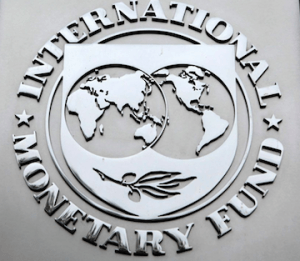IMF Ghana programme summary for $918m facility
 On April 3, 2015, the International Monetary Fund (IMF) Executive Board approved a $918 million credit facility for Ghana.
On April 3, 2015, the International Monetary Fund (IMF) Executive Board approved a $918 million credit facility for Ghana.
According to the IMF the three-year arrangement under the Extended Credit Facility (ECF) for Ghana is in support of country’s medium-term economic reform programme.
The IMF outlines a summary of the programme it agreed on with Ghana as follows:
It says the government’s three-year economic reform programme seeks to support growth and help reduce poverty by restoring macroeconomic stability through an ambitious and sustained fiscal consolidation, a prudent debt management strategy with improved fiscal transparency, and an effective monetary policy framework.
Secondly, the programme foresees a pick-up in economic growth, starting in 2016, supported by expected increases in hydrocarbon production. Lower inflation and interest rates, combined with a stable exchange rate environment would help support private sector activity.
It also projects that increased oil exports and lower oil imports on the back of domestic gas production will support the improvement in the current account, which together with the surpluses on the financial and capital account will help build up gross reserves to a more adequate level over the medium term.
The IMF indicates the main pillars of the programme as:
- a sizeable and frontloaded fiscal adjustment to restore debt sustainability, focusing on containing expenditures through wage restraint and limited net hiring, as well as on measures to mobilize additional revenues;
- structural reforms to strengthen public finances and fiscal discipline by improving budget transparency, cleaning-up and controlling the payroll, right-sizing the civil service, and improving revenue collection;
- restoring the effectiveness of the inflation targeting framework to help bring inflation back into single digit territory; and
- preserving financial sector stability. To alleviate the potential adverse impact of the strong fiscal adjustment on the most vulnerable in society and protect real income of the poor, which was dented by three years of high inflation, the government is committed to use part of the resulting fiscal space to safeguard social and other priority spending under the program, including expanding the targeted social safety nets—such as the Livelihood Empowerment Against Poverty (LEAP) programme.
The envisaged fiscal consolidation the IMF says, is projected to further dampen non-oil economic growth initially and reduce inflation in 2015, but growth is expected to rebound in the following years. Non-oil GDP growth would decelerate further to 2.3 percent in 2015 before picking up in the following years, reaching 5.5 percent by 2017.
On the fiscal side, it notes, the programme seeks to expand revenue collection, restrain the wage bill and other primary expenditures, while making space for priority spending and for clearing all domestic arrears.
“Despite lower projected oil revenues, the programme aims at turning the primary balance from a deficit of 3.7 percent in 2014 into a surplus of 0.9 percent of GDP in 2015 and 3.2 percent of GDP in 2017,” it adds.
By Emmanuel K. Dogbevi
